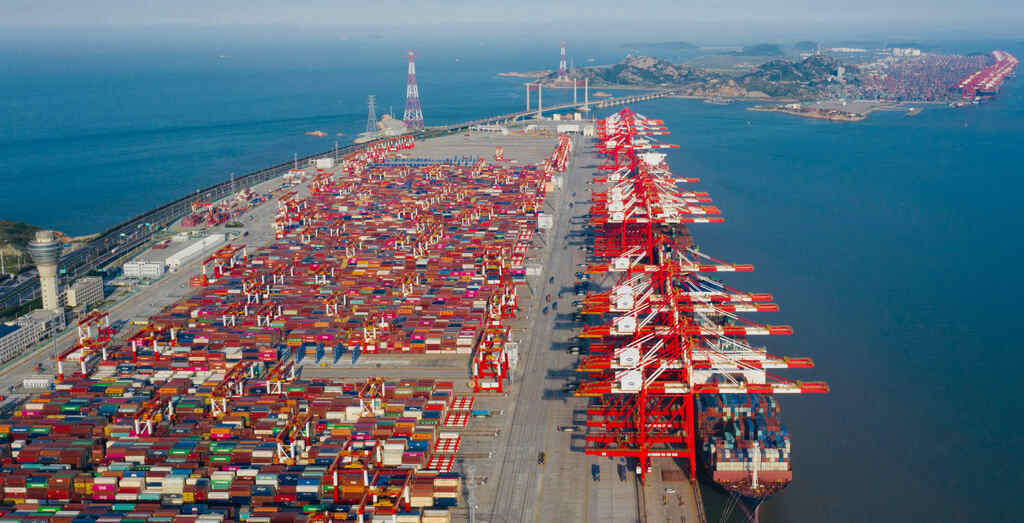Shanghai International Port Group’s (SIPG) container traffic reached a record in 2021, moving 47.033 million TEUs at the Port of Shanghai.
In doing so, it recorded a year-on-year increase of 8.1%, and remained the world’s largest for the 12th consecutive year.
The company’s attributable net profit hit a record high, reaching RMB14.682 billion, up 76.74% year-on-year.
Also, the cargo throughput at the company’s home port was 539 million tons, up 5.7% year-on-year.
In particular, the bulk cargo throughput at the company’s home port was 823.880 million tons, up 8.9% year-on-year.
Port of Shanghai
SIPG, the port’s public operator, has attached great importance to digitalization since its inception.
In 2014, it published a research report on «Shanghai SIPG Smart Port: Driving Future Trade,» which laid out a port development framework based on the «smart» concept, in line with a report by the Asia Pacific Economic Cooperation (APEC) forum.
Following the logic of the PDS, the following paragraphs focus on different elements related to management culture, human capital and the technological ecosystem of the port, always according to the APEC document.
An independent «Informatization Leading Group» SIPG has created an «Informatization Leading Group», which plans and promotes all digitization tasks at a global level in the main port holding company, as well as in its subsidiary companies.
It plays a coordinating and advancing role in the development of computerization throughout SIPG.
On the one hand, he reports directly to the main president of the group, faces the demand of the management and implements the ideas of the management.
On the other hand, he connects with the group’s three independent subsidiaries, which are responsible for the operation and maintenance of computerization, R&D and e-commerce, and implements the plans step by step.
Digital development
In June 2021, the Port of Shanghai reorganized the functions of some of the administrative departments at headquarters. This included the creation of a Science and Technology Information Department, which was assigned the function of information management. Within that department is the Information Lead Group.
In 2016, the Strategic Research Department was coupled with a consulting firm to conduct research on «Smart Port.»
Many of the researchers employed in the department have the ability to analyze and make meaningful interpretation of the raw data.
The Department has played an important role in the digital transformation and development of the port.
In addition to the above, Shanghai Port pays significant attention to talent cultivation. In this regard, the Shanghai Port Education and Training Center was established, where an annual employee education and training plan has been developed.
It contains training courses related to the port’s digital development, mainly related to technology and management.
In 2020 alone, 4024 person-hours of technology-related training have been provided, totaling more than 14 thousand classroom hours.
Comprehensive platform
At the same time, Shanghai Port has developed a virtual reality (VR) tire crane simulation operating system, officially installed in the education and training center. The simulation training system integrates physical hardware control.
Trainees wear VR helmets and drive virtual RTGs to fight the changing gust, balance the container weight, control the sling swing, and can collaborate with one or more users simultaneously.
The device is equipped with multiple functions, such as real-time flow monitoring, Business Intelligence (BI) analysis and data tracking.
The technology ecosystem of the Port of Shanghai is extensive in many different port activities. SPIG has actively applied «Internet +» thinking, and leveraged information technology (e.g., cloud, IoT, 5G mobile communication,…) to build the world’s largest intelligent terminal, namely Shanghai Tangshan Automated Terminal. In addition, a comprehensive service information platform of the Yangtze River transportation network was developed.
This unique platform focuses on the main functions of Shanghai port in connection with various container terminals along the Yangtze River basin, establishing an information exchange mechanism and unifying data exchange standards.
![]()

